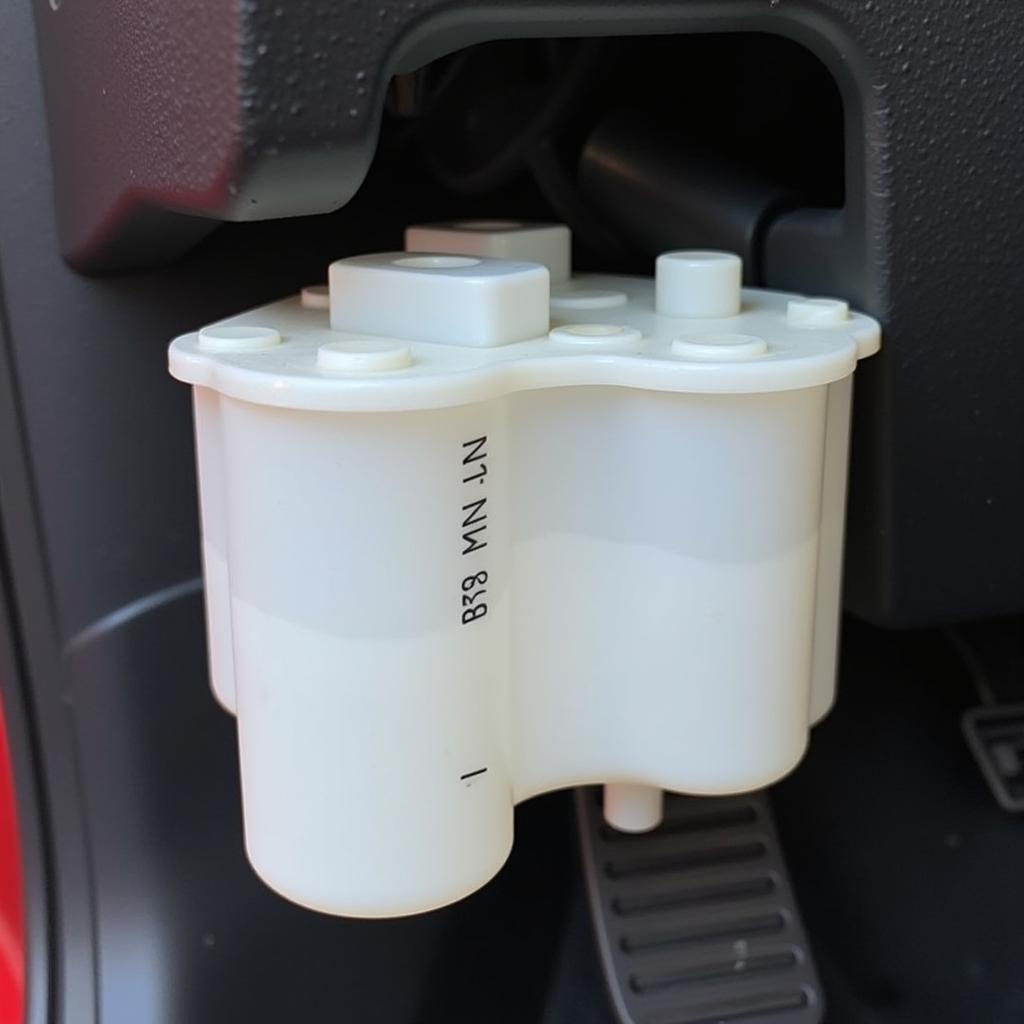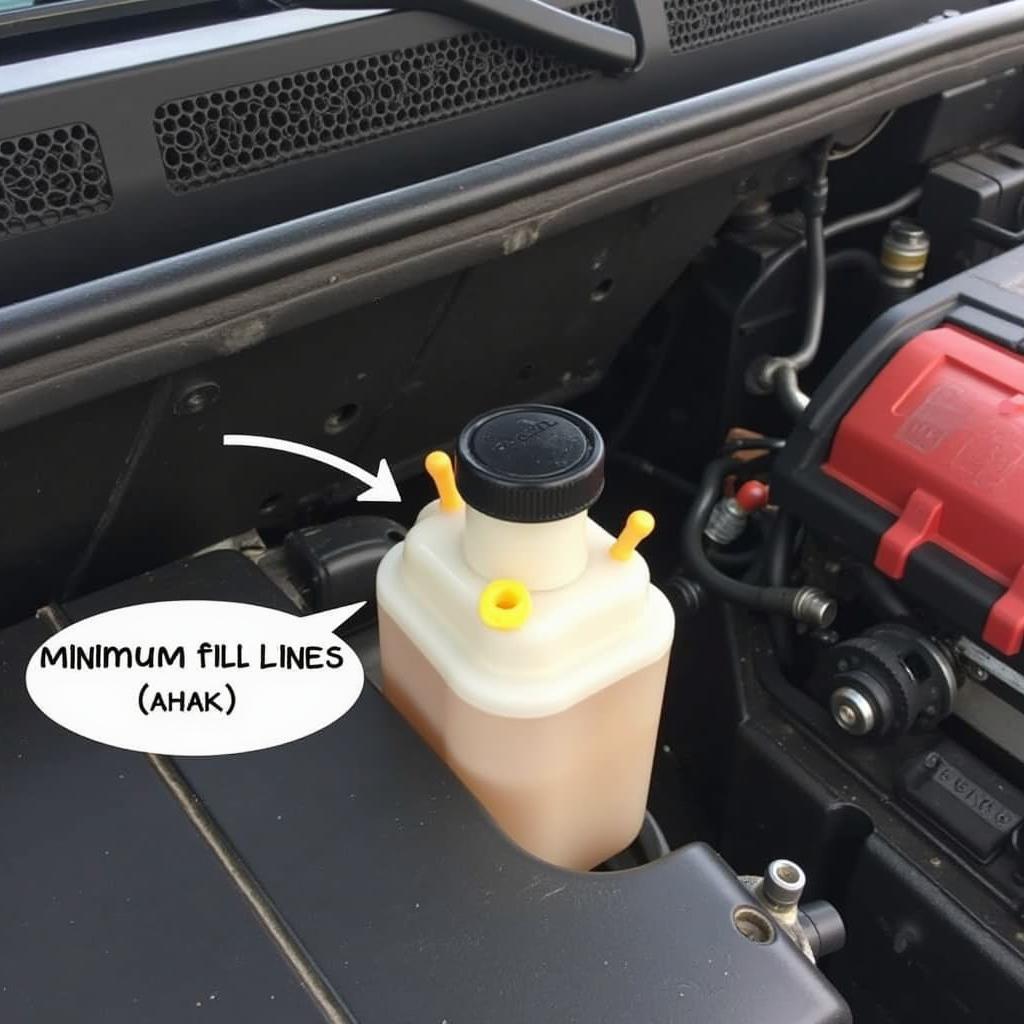The brake warning light on your dashboard is a crucial safety feature in your 2007 Honda Fit. When illuminated, it signals a potential issue with your braking system that requires immediate attention. Ignoring this warning light could lead to brake failure, putting you and other drivers at risk. This comprehensive guide will walk you through the common causes of a 2007 Honda Fit brake warning light and provide troubleshooting tips to help you diagnose and potentially resolve the issue.
Understanding Your Honda Fit’s Brake Warning Light System
Your Honda Fit’s brake warning light is part of a complex system designed to alert you of potential problems. This system monitors various components, including:
- Brake Fluid Level: The most common reason for the brake warning light to illuminate is low brake fluid.
- Parking Brake: If your parking brake is engaged, even slightly, the warning light will likely illuminate.
- Brake Pad Wear Sensors: Many modern vehicles, including some 2007 Honda Fit models, have sensors that monitor brake pad wear. When the pads wear down to a certain level, the sensor triggers the warning light.
- Hydraulic System Issues: Problems within the brake lines, calipers, or wheel cylinders can also trigger the warning light.
- ABS System Malfunction: If your Honda Fit is equipped with an Anti-lock Braking System (ABS), a malfunction within the ABS system itself can trigger the warning light.
Common Causes of a 2007 Honda Fit Brake Warning Light
1. Low Brake Fluid
Why it matters: Brake fluid is the lifeblood of your braking system. It transmits the force from your foot on the brake pedal to the calipers, which then squeeze the brake pads against the rotors, slowing or stopping your vehicle.
How to check:
- Locate the brake fluid reservoir under the hood. Refer to your owner’s manual for the exact location.
- Check the fluid level. It should be between the “MIN” and “MAX” lines on the reservoir.
What to do: If the fluid level is low, carefully add the correct type of brake fluid (DOT 3 or DOT 4, as specified in your owner’s manual). If you need to add fluid frequently, there may be a leak in your brake system, requiring professional inspection.
 Honda Fit Low Brake Fluid
Honda Fit Low Brake Fluid
2. Worn Brake Pads
Why it matters: Brake pads are designed to wear down over time. When they become too thin, your braking performance is significantly compromised, increasing your stopping distance and potentially leading to costly damage to your rotors.
How to check:
- Look through the spaces between the spokes of your wheels.
- Visually inspect the brake pads attached to the brake calipers.
- If the pads are less than ¼ inch thick, it’s time for a replacement.
What to do: Replacing brake pads is a relatively straightforward job for those comfortable with basic car maintenance. However, it’s often recommended to have a professional mechanic handle brake pad replacement to ensure proper installation and bleeding of the brake system.
3. Faulty Brake Light Switch
Why it matters: The brake light switch, located behind the brake pedal, signals your brake lights to illuminate when you press the pedal.
How to check: If your brake lights aren’t working in addition to the brake warning light being on, the brake light switch is a likely culprit.
What to do: Replacing a faulty brake light switch generally involves removing the panel under the dashboard and accessing the switch behind the brake pedal. This repair can be more complex and might require the expertise of a professional mechanic.
4. ABS Sensor Issue
Why it matters: The ABS sensors monitor the speed of each wheel and relay that information to the ABS control module.
How to check: A faulty ABS sensor may trigger the ABS warning light on your dashboard in addition to the brake warning light.
What to do: Diagnosing a faulty ABS sensor often requires specialized diagnostic tools. If you suspect an ABS issue, it’s best to take your Honda Fit to a qualified mechanic specializing in automotive electrical systems.
When to Consult a Professional
While some causes of a brake warning light can be addressed with basic troubleshooting, it’s crucial to understand when professional help is necessary. Here are some instances where seeking professional assistance is vital:
- You’re uncomfortable with DIY car maintenance: Brake systems are critical safety components. If you’re unsure about any step of the troubleshooting or repair process, it’s always best to err on the side of caution and consult a professional.
- The problem persists after basic troubleshooting: If the brake warning light remains on after checking your brake fluid level, parking brake, and visually inspecting your brake pads, there’s likely a more complex issue at hand.
- You suspect a leak in your brake system: Brake fluid leaks are serious and should be addressed immediately by a qualified mechanic.
Expert Insight
“A common mistake I see is drivers ignoring the brake warning light, assuming it’s just a minor issue,” says Master Automotive Technician, John Smith. “But that light is your car’s way of telling you something is wrong with a critical safety system. Early diagnosis can often save you from costly repairs down the line and, more importantly, keep you safe on the road.”
Conclusion
The brake warning light in your 2007 Honda Fit is a vital safety feature that should never be ignored. By understanding the common causes, performing regular checks, and seeking professional help when needed, you can ensure your braking system remains in optimal condition, keeping you and your passengers safe on every journey. Remember, a little preventative maintenance goes a long way in preventing potentially dangerous and expensive brake problems in the future.

